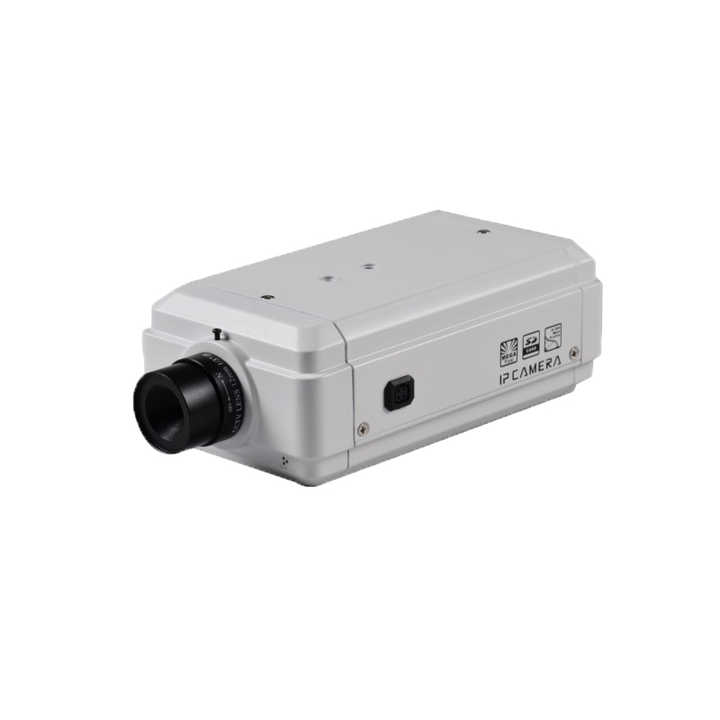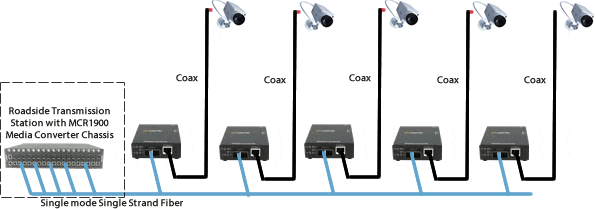Protect Your Property Efficiently with an Advanced Fence Detection System Technology
Wiki Article
How CCTV Cameras With Fiber Optic Outcome Improve Long-Distance Monitoring
CCTV electronic cameras outfitted with fiber optic output represent a considerable improvement in long-distance monitoring innovation, providing unparalleled benefits over standard systems. By leveraging the buildings of light transmission via fiber optics, these electronic cameras ensure high-def video high quality continues to be intact across considerable distances while successfully reducing electromagnetic disturbance. This innovation not just boosts picture clearness but additionally improves installment procedures and resource allotment. As we check out the ramifications of this technology, one must think about exactly how these improvements are improving the landscape of safety and monitoring systems in numerous applications.
Recognizing Fiber Optic Modern Technology
Fiber optic innovation is progressively used in long-distance tracking applications because of its outstanding capability for data transmission. This technology uses slim strands of glass or plastic fibers to transmit information as light signals, dramatically lowering the depletion typically connected with typical copper wires. The fundamental homes of fiber optics enable the transmission of big volumes of information over significant distances without loss of top quality, making it a suitable choice for applications calling for trustworthy interaction.The principle of complete internal reflection helps with the reliable transmission of light within the fiber, making sure high bandwidth and rate. Unlike electrical signals in steel cable televisions, optical fiber are immune to electromagnetic disturbance, improving the integrity of data transmission. This characteristic is especially valuable in atmospheres with high degrees of electrical sound, such as industrial setups or urban locations.
Additionally, fiber optic cables are lighter and more adaptable than their copper counterparts, which streamlines installation and minimizes architectural load. With their durability and resistance to environmental variables, fiber optics are well-suited for exterior applications, thereby prolonging the reach of keeping track of systems. Therefore, fiber optic technology is ending up being a keystone in modern surveillance options, properly dealing with the difficulties of long-distance surveillance.
Advantages of Fiber Optic CCTV
Utilizing fiber optic innovation in CCTV systems supplies numerous advantages that enhance monitoring capacities. Among the primary benefits is the capability to transfer high-def video clip over fars away without considerable signal deterioration. Unlike traditional copper cable televisions, fiber optics can maintain video clip quality over extensive runs, making them excellent for big residential properties or remote tracking places.Furthermore, fiber optic wires are much less at risk to electromagnetic disturbance, which can misshape signals in traditional systems. This makes sure clearer pictures and nonstop solution, vital for safety and security tracking. Fiber optics are inherently more safe, as obstructing signals calls for customized equipment, thus giving an extra layer of protection versus unapproved accessibility.
The light-weight and portable nature of fiber optic cables additionally simplifies setup, allowing less complicated transmitting through limited rooms and lowering total labor expenses. Their sturdiness makes them immune to ecological aspects such as moisture and temperature changes, extending the life-span of the security system.
Last but not least, fiber optic systems can support a majority of cams on a solitary network, optimizing sources and click now providing scalability for future growth. These advantages make fiber optic CCTV systems a premium selection for contemporary surveillance demands.
Contrast With Conventional Equipments
When comparing CCTV systems, conventional setups often drop short in numerous crucial locations, especially in terms of distance and signal stability. Standard coax cable systems commonly encounter significant signal deterioration over fars away, restricting efficient tracking ranges to around 300 feet (cctv fibre optic cable). Yet threshold, image clarity reduces, causing prospective dead spots and decreased monitoring performanceOn the other hand, fiber optic systems maintain signal stability over much higher distances, typically surpassing numerous miles without loss of quality. This is mostly due to their capability to transfer data as light signals, which are less vulnerable to electromagnetic interference than electric signals used in conventional systems.
Additionally, typical systems call for a lot more substantial upkeep and troubleshooting because of their susceptability to ecological my explanation elements such as dampness and electro-magnetic noise. Fiber optic systems, alternatively, deal improved resilience and reduced upkeep expenses, as they are less susceptible to damages.
Applications in Long-Distance Monitoring
The advantages of modern CCTV systems in preserving signal stability over cross countries open a vast array of applications for long-distance tracking. One significant application is in city monitoring, where communities deploy fiber optic CCTV systems to keep track of public rooms, improving safety and security and discouraging criminal activity. These systems offer continuous, high-grade video feeds that are critical for reliable police and emergency feedback.Another essential application is in industrial setups, where remote monitoring of making procedures and harmful areas is important. Fiber optic CCTV can hold up against rough settings and transfer data over long distances without loss of high quality, enabling real-time oversight and decreasing threats to personnel.
In addition, essential facilities such as airports, railways, and pipes profit from long-distance CCTV surveillance. Safety and security groups can manage huge areas from systematized control rooms, ensuring fast action to any events.
Moreover, in farming settings, farmers make use of long-distance CCTV to monitor crops and livestock, helping to improve efficiency and safety. In general, the adaptability and reliability of fiber optic CCTV systems make them vital across different fields, making it possible for extensive security options from this source tailored to details needs.
Future Fads in Surveillance Innovation
Just how will advancements in technology reshape the landscape of monitoring? The future of monitoring technology is poised for substantial makeover, driven by technologies such as artificial knowledge (AI), maker understanding, and side computing. These modern technologies make it possible for real-time information evaluation, permitting fast recognition of potential dangers and enhanced situational understanding.AI-powered analytics will boost the precision of face acknowledgment systems, decreasing false positives and allowing extra efficient tracking of people. Additionally, the assimilation of Web of Things (IoT) devices will certainly facilitate a smooth network of interconnected security systems, boosting surveillance capacities throughout vast areas.
Another pattern is the change towards cloud-based storage space solutions, which provide scalable information management and accessibility. This will enable companies to store vast quantities of video information without the restrictions of physical storage, while guaranteeing that details is easily retrievable.

Conclusion
Finally, CCTV cameras equipped with fiber optic output represent a substantial development in long-distance surveillance capabilities. The application of fiber optic modern technology makes sure high-definition video clip transmission over extensive ranges without top quality degradation, while also supplying resistance to electro-magnetic disturbance. The lightweight and flexible nature of these systems assists in streamlined setup and source optimization. As security technology remains to evolve, the fostering of fiber optic options will likely play an essential duty in enhancing protection throughout diverse applications.Report this wiki page